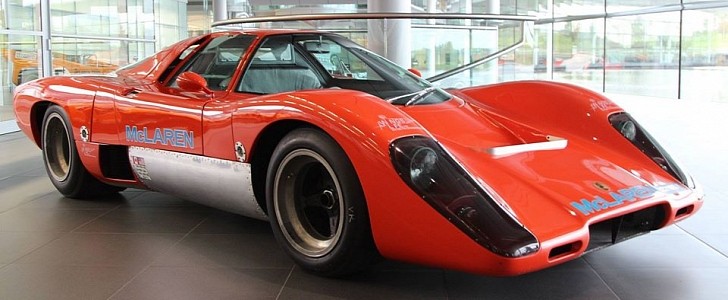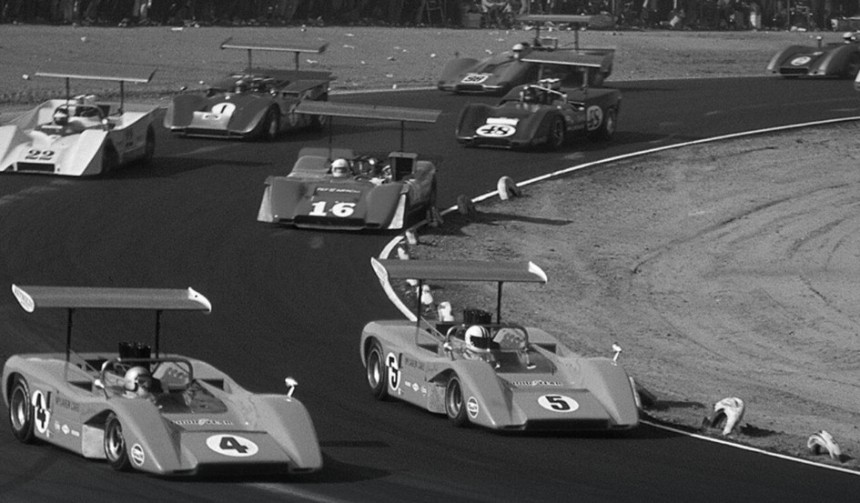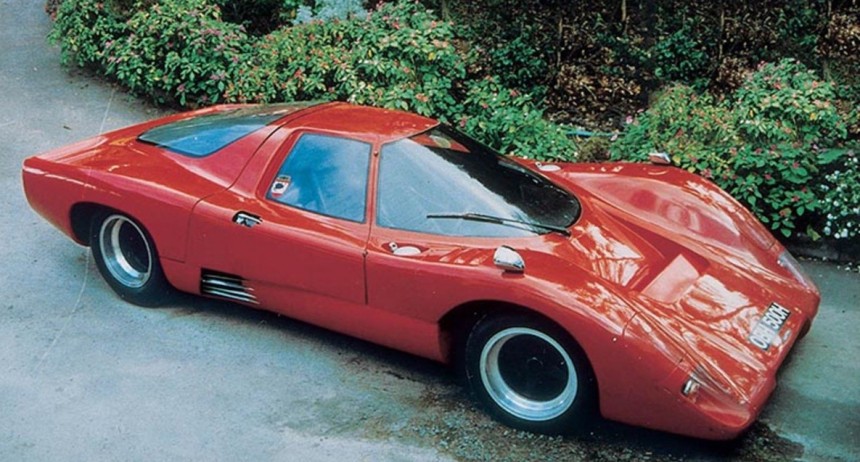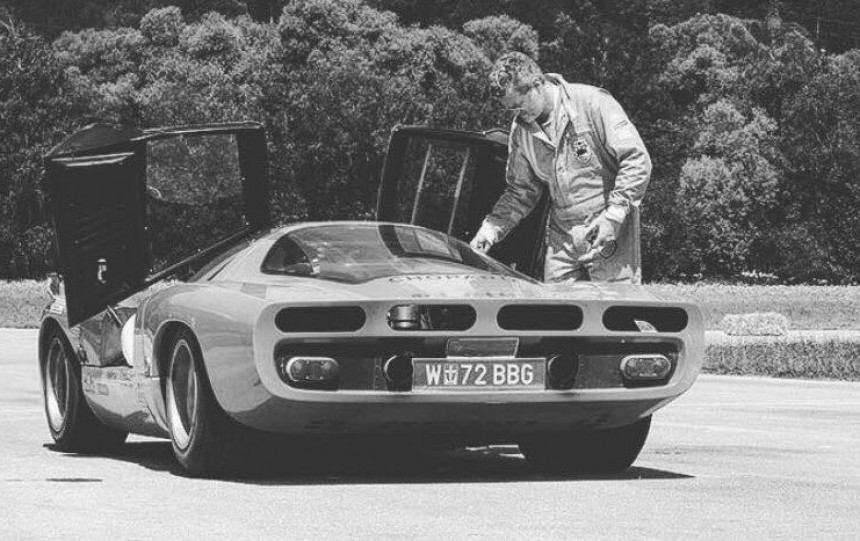The McLaren F1, one of the most iconic supercars from the modern era, is famous for many innovative features and technology but also for being the company's first-ever road-going car. And while that statement is not wrong if we take series production models into account, the truth is McLaren built its first road car a couple of decades earlier.
McLaren's road car division, originally known as McLaren Cars, was established in late 1985. At the time, McLaren was already operating as a racing outfit for more than 20 years. Bruce McLaren, a New Zealander racing driver, founded the company that eventually became McLaren Racing Limited in 1963. McLaren joined the Formula One series in 1966 to become one of the most successful teams in history, but the brand's racing saga began as early as 1963 when Bruce built the M1.
An open-top Group 7 car built around a modified Elva chassis and fitted with a small-block Chevrolet V8, the M1 was raced in North America and Europe and paved McLaren's way toward success in the Canadian-American Challenge Cup (Can-Am). Having joined Formula One in 1966 with the M2B, McLaren tackled the Can-Am series that same year with the M1B. Bruce himself took third place in the drivers' championship, but that was just a taste of the success that was to follow.
Bruce returned in 1967 with a brand-new car. Also powered by a Chevy V8, the M6A was better suited to go against the Lola T70, and McLaren won the championship. From then on, the New Zealander dominated the series for four more years with developments of the M8. His success came to a halt in 1972, when Porsche joined the series with a 917-based race car.
In 1968, McLaren retired the M6A to develop and M8A. But the British company commissioned Trojan to built replicas and sell them to privateers without an engine. This secondary venture eventually spawned a closed cockpit version of the M6A. McLaren decided to develop the project further and homologate the car for FIA Group 4 regulations in order to race it at the 24 Hours of Le Mans.
However, McLaren failed to build more than three prototypes, and Bruce's dream of seeing the M6 hit the Circuit de la Sarthe against Ford and Ferrari was put on hold. Two of the three prototypes were later converted for road use, and one of them became Bruce McLaren's personal car. It’s believed Bruce drove his M6GT to Goodwood on the day he died while testing the M8D race car in June 1970.
McLaren archives show that the company tested two headlamps layouts. One prototype featured the classic configuration with round lights under clear lenses, but the Brits also built one with turn signals under lenses, while the headlamps above were of the pop-up variety. The latter was designed for Bruce McLaren's road-legal conversion, as pop-up lights weren't allowed at Le Mans, and they weren't exactly aerodynamic either.
The profile of the M6GT retained the wheelbase and the side skirt design of the M6A, but everything above was different, starting with the closed cockpit design and the butterfly-style doors. The rear fascia was modified to include taillights, and the exhaust pipes were moved higher. Unlike the M6A, which had the engine popping out through the hood, the M6GT featured a transparent cover integrated into the aerodynamic roof.
Of course, Bruce designed the M6GT using everything he learned from his years of Formula One and Can-Am racing. He made extensive use of lightweight materials like aluminum, resin, and fiberglass. The M6GT tipped the scales at just over 800 kg (1,763 lbs), being at least 50 percent lighter than mid-engined supercars of the era like the Lamborghini Miura. And it was less than 200 kg (440 lbs) heavier than the race-spec M6A.
Sadly, the M6GT died with Bruce McLaren in 1970, and it took almost 25 years for the British company to roll out its first series-produced road car, the F1. Luckily, Bruce's very own example and another race-spec prototype have survived to this day to talk about McLaren's ambition to race at Le Mans and deliver a road-legal supercar only a few years after the company was established.
An open-top Group 7 car built around a modified Elva chassis and fitted with a small-block Chevrolet V8, the M1 was raced in North America and Europe and paved McLaren's way toward success in the Canadian-American Challenge Cup (Can-Am). Having joined Formula One in 1966 with the M2B, McLaren tackled the Can-Am series that same year with the M1B. Bruce himself took third place in the drivers' championship, but that was just a taste of the success that was to follow.
Bruce returned in 1967 with a brand-new car. Also powered by a Chevy V8, the M6A was better suited to go against the Lola T70, and McLaren won the championship. From then on, the New Zealander dominated the series for four more years with developments of the M8. His success came to a halt in 1972, when Porsche joined the series with a 917-based race car.
The Race-Bred Supercar
So what's with all the Can-Am talk since this is about a road car? Well, McLaren's first street-legal sports car is actually deeply rooted into the M6A, the race car that brought Bruce McLaren his first Can-Am title.In 1968, McLaren retired the M6A to develop and M8A. But the British company commissioned Trojan to built replicas and sell them to privateers without an engine. This secondary venture eventually spawned a closed cockpit version of the M6A. McLaren decided to develop the project further and homologate the car for FIA Group 4 regulations in order to race it at the 24 Hours of Le Mans.
However, McLaren failed to build more than three prototypes, and Bruce's dream of seeing the M6 hit the Circuit de la Sarthe against Ford and Ferrari was put on hold. Two of the three prototypes were later converted for road use, and one of them became Bruce McLaren's personal car. It’s believed Bruce drove his M6GT to Goodwood on the day he died while testing the M8D race car in June 1970.
A Streamlined M6A Race Car
Design-wise, the M6GT borrowed some cues from the M6A. The front end retained most of the race car's design, with muscular wheel arches flanking a low-slung nose. The vent layout in the nose and on the front hood remained largely the same, but the M6GT was fitted with headlamps. The M6A didn't have any, as Can-Am did not require them, but they were included in the 24 Hours of Le Mans requirements as it involved was night driving too.McLaren archives show that the company tested two headlamps layouts. One prototype featured the classic configuration with round lights under clear lenses, but the Brits also built one with turn signals under lenses, while the headlamps above were of the pop-up variety. The latter was designed for Bruce McLaren's road-legal conversion, as pop-up lights weren't allowed at Le Mans, and they weren't exactly aerodynamic either.
The profile of the M6GT retained the wheelbase and the side skirt design of the M6A, but everything above was different, starting with the closed cockpit design and the butterfly-style doors. The rear fascia was modified to include taillights, and the exhaust pipes were moved higher. Unlike the M6A, which had the engine popping out through the hood, the M6GT featured a transparent cover integrated into the aerodynamic roof.
Innovative and Fast
Speaking of the engine, McLaren opted to stick with the small-block Chevy V8 in the M6A race car but went with a slightly smaller mill. While the M6A was raced with a 5.9-liter V8 rated at around 525 horsepower, Bruce stuck a 5.7-liter engine good for around 400 horses in the M6GT. It seems that the coupe needed only 4.2 seconds to hit 60 mph (96 kph) from a standing start and reached a top speed of 165 mph (265 kph), both impressive figures for 1970.Of course, Bruce designed the M6GT using everything he learned from his years of Formula One and Can-Am racing. He made extensive use of lightweight materials like aluminum, resin, and fiberglass. The M6GT tipped the scales at just over 800 kg (1,763 lbs), being at least 50 percent lighter than mid-engined supercars of the era like the Lamborghini Miura. And it was less than 200 kg (440 lbs) heavier than the race-spec M6A.
Sadly, the M6GT died with Bruce McLaren in 1970, and it took almost 25 years for the British company to roll out its first series-produced road car, the F1. Luckily, Bruce's very own example and another race-spec prototype have survived to this day to talk about McLaren's ambition to race at Le Mans and deliver a road-legal supercar only a few years after the company was established.















